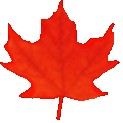
Common menu bar links
Institutional Links
-
Translation Bureau
Language Portal of Canada
-
TERMIUM Plus®
-
Index G
- G20
- G7
- G8
- Gaelic
- gambit
- gamut
- gap
- Gastown
- gastr-
- gastro-
- Gateway to the North
- Gateway to the West
- gauntlet
- gender
- gender-inclusive writing: correspondence (Linguistic recommendation from the Translation Bureau)
- general consensus
- geo-
- geographical names: Indian reserves
- geographical names: names of pan-Canadian significance
- geographical names: national parks
- geographical names: scientific and geological names
- geographical names: translation
- geographical names: Treasury Board policy
- geographical names: types and composition
- geographical names: undersea features
- Germano-
- gerund
- gerund phrase
- g (gram)
- gibe
- give consideration to
- glacio-
- glamorize
- glamorous
- glamour
- glyc-
- glyco-
- good
- good deal of
- goods
- got
- gotten
- Government of Canada (Linguistic recommendation from the Translation Bureau)
- Governor General Designate
- graduate from
- graduate in
- Graeco-
- graffiti
- graffito
- gram
- gramin-
- gramini-
- grammar terms
- grapho-
- grasp of
- gray
- Greco-
- greenwashing
- grey
- grill
- grille
- grisly
- grizzled
- grizzly
- Group of Seven
- GTA
- guarantee
- guaranty
- gybe
- gyro-
Proactive Disclosure
Important notice
Writing Tips has been archived and won’t be updated before it is permanently deleted.
For the most up-to-date content, please consult Writing Tips Plus, which combines content from Writing Tips and The Canadian Style. And don’t forget to update your bookmarks!
Search and Functionalities Area
geographical names: Treasury Board policy
In a bilingual country such as Canada, questions arise as to the designations to be used in official documents for cities, towns, villages, lakes, rivers, mountains and other geographical entities and features that may have different but well-established designations in the two official languages or may be known by one name in one region and a different one elsewhere.
Background
On November 23, 1983, the Treasury Board issued its Circular No. 1983-58 to implement the policy adopted by the Canadian Permanent Committee on Geographical Names (CPCGN) regarding the linguistic treatment of geographical names on federal maps and in federal documents.
The Treasury Board also designated the Translation Bureau as the organization responsible for determining what, in running text, should be the proper form of the names of geographical features in the other language.
In 1989 a committee made up of Translation Bureau and CPCGN representatives was assigned the task of examining the various problems encountered in translating official English names of Canadian geographical features into French and devising solutions. The committee produced the "General Rules for Translating and Writing the Names of Canadian Geographical Features," the purpose of which was to standardize the translation and writing of geographical feature names within a sentence (rather than on a map). Although the rules were written for the translation of English names into French, the committee did recommend that, where applicable, they also be followed for the translation of French names into English.
Principles
The principles enunciated in the Treasury Board policy are as follows:
- The official form of a geographical name is the one adopted by the provincial or federal authorities in whose jurisdiction an entity lies. This name can be found in the Gazetteer of Canada.
- Certain geographical names of pan-Canadian significance have well-known, official forms in both English and French. Both forms may be used on maps and in documents. See GEOGRAPHICAL NAMES: NAMES OF PAN-CANADIAN SIGNIFICANCE
- All other geographical names have only one official form, which is the one to be used on federal maps in either official language.
- In documents, it is permissible to translate the generic portion of names of geographical features, that is, the portion that indicates the nature of the entity (Lake in "Arrow Lake"), but not the specific portion that names the entity (Arrow in "Arrow Lake").
- Names of inhabited places retain their official form in both English and French texts, e.g. Montréal (Que.), Saint John (N.B.), and St. John’s (N.L.)
© Public Services and Procurement Canada, 2025
TERMIUM Plus®, the Government of Canada's terminology and linguistic data bank
Writing tools – Writing Tips
A product of the Translation Bureau


